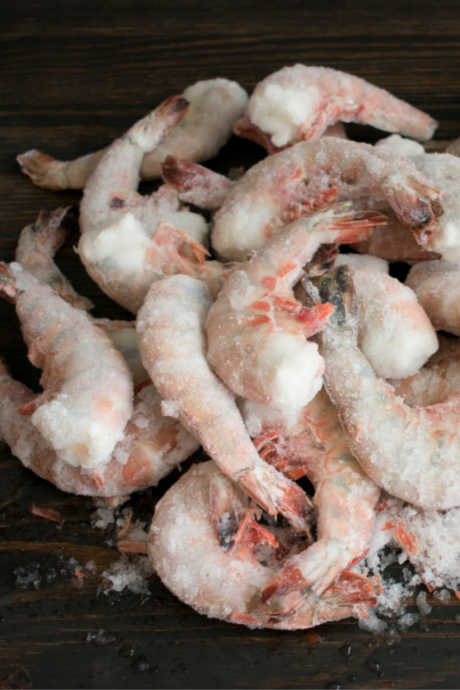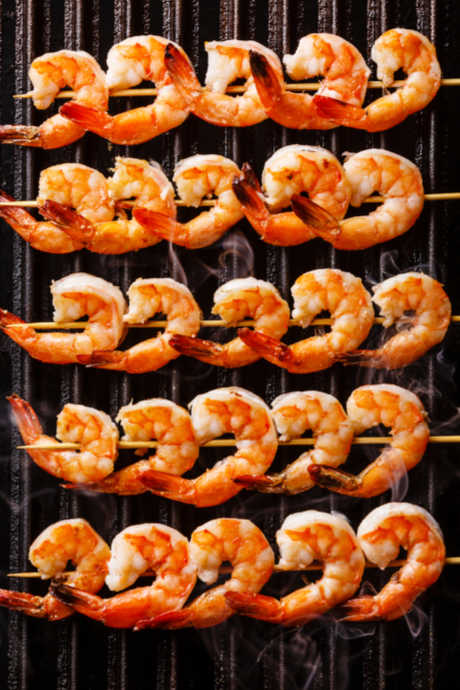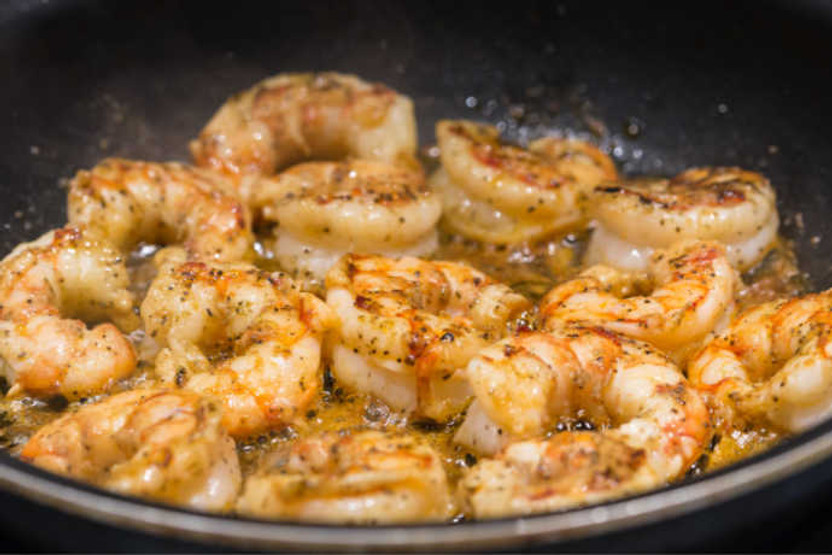Get the Scoop on Shrimp
Posted by Julie on Feb 3rd 2020
In land-locked states like Colorado, where we live, fresh seafood isn’t as readily available as it is on the coasts. But there’s one type of seafood that you find in the same condition nearly anywhere you buy it, and that’s shrimp. However, there are still some important things to know about buying and preparing shrimp. Keep reading to get the scoop on shrimp.
Are Fresh Shrimp Really Fresh?
We’ve written before about how frozen vegetables are often superior to so-called “fresh” vegetables that have traveled long distances over several days. Shrimp are even more highly perishable. That’s why they are usually frozen immediately after being caught. By that we mean they’re processed and frozen right on shrimp boats, long before they get back to shore.

One key reason to freeze shrimp immediately concerns the enzymes in shrimp heads. When shrimps die, those enzymes start to break down the flesh in their bodies, which diminishes both taste and texture. Freezing shrimp halts this process.
If you find “fresh” shrimp that aren’t swimming in a tank, they probably aren’t actually fresh. They’ve been frozen and thawed, and you can’t be sure how long they’ve been thawed. Thawed shrimp, even when they’re on ice, are actually less fresh than frozen shrimp.
How to Buy Shrimp
Sustainability is a concern with all types of seafood, and shrimp are no exception, whether they are wild-caught or farmed. Shrimp can also be freshwater or come from the ocean. To ensure you’re buying responsibly-sourced shrimp, look for approval labels from independent regulatory groups. Serious Eats suggests the Marine Stewardship Council, the Aquaculture Stewardship Council, and Naturland. You can also look for labels from GGN Certified Aquaculture and Best Aquaculture Practices (BAP).
Shrimp are frozen in two primary ways, individually and in blocks. The more preferable of the two is called Individually Quick Frozen, or IQF. The advantage of this method is that it’s more gentle on the shrimp, and they reach consumers in better condition.

Shrimp are sold based on size and how many of them are in a pound. That means a package of shrimp with lower numbers on it contains larger shrimp. Conversely, a package of shrimp with higher numbers contains smaller shrimp. As Bon Appetit notes, you should choose shrimp that’s sized appropriately for what you’re cooking, whether that’s shrimp cocktail, seafood gumbo, or fried rice.
You can buy shrimp at various stages of processing. The least processed and least expensive shrimp still have their shells and have not been deveined. (We’ll explain in the next section how to prepare shell-on shrimp.) You can also buy shrimp that have been deveined, which means their shell has been split and the “vein” removed. Serious Eats cautions that these shrimp, known as EZ-peel shrimp, are split and deveined by machines. The most expensive and highly processed shrimp are pre-peeled. Serious Eats recommends against buying pre-peeled shrimp. Not only do you lose the flavor of the shells during cooking, but the automated peeling process can leave shrimp in pieces.
After you’ve thawed your shrimp (more on that in the next section), give them a sniff and inspect them. As with crabs, shrimp should not smell like ammonia. Look at the shells too. If you see black spots, that’s a hint the flesh inside has started breaking down. Even if there aren’t any black spots, yellowing shells are another bad sign. Those shrimp may have been treated with sodium bisulfite to bleach away the black spots.
How to Prepare Shrimp
We’ve written before about the importance of thawing meat properly. When thawing shrimp, taste and texture can suffer if you aren’t careful. The Spruce Eats recommends leaving frozen shrimp in a colander in the refrigerator overnight. For a quicker thaw, they suggest sealing frozen shrimp in a plastic bag and running cold water over the bag. Serious Eats also advocates for the cold water method. Either way, make sure to pat the shrimp dry before proceeding.
Deveining shrimp is neither as difficult nor as unpleasant as it may sound. The “vein” is the digestive tract of the shrimp. It’s not harmful, but the contents may be gritty or taste bad. Plus, it’s easy to snip the shell in a line from head (or where the head used to be) to tail and scrape out the vein. If you don’t have kitchen shears, use a paring knife to cut the shell.

Whether or not to leave the shells on depends how you’re cooking shrimp. On one hand, the shells add flavor. But on the other hand, some dishes make it especially difficult to remove the shells before eating, such as pastas and gumbo. The Spruce Eats recommends always leaving the shells on when grilling shrimp, as they protect the shrimp from high direct heat, along with adding flavor. Either way, be sure to save the shells. Just like a chicken or turkey carcass, seafood shells can be used to make homemade stock which makes a delicious base for bisque or other seafood-based soups.
Finally, remember that shrimp are small and delicate, so they cook quickly. Even jumbo shrimp can’t compare to the hardiness of a pork chop. Watch for the shells to turn pink or the flesh to turn white, and your shrimp to curl into a C-shape. Then take your shrimp off the heat right away, before they curl into an O-shape. The Reluctant Gourmet offers an easy way to remember: C is for cooked, and O is for overcooked. Overcooking takes shrimp from tender to tough, so keep a close eye on your shrimp for best results.
Shrimp Recipes
Now that you know how to handle shrimp, what should you do with it? We’ve got a whole list of previous posts with recipes calling for shrimp. Give them a try!

